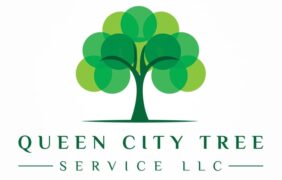This winter don’t forget to care for your tree! Even though it’s cold and wet, it is the perfect time to care for your dormant trees. Follow these 3 steps for essential tree care for the winter.
Are you thinking about tree care now???
Most people think of spring as the time to address this, whether planting a new tree or caring for one but the reality of the situation is, now is the best time to care for your mature trees. When the tree is leafless, a natural part of its life cycle, it is actually the perfect opportunity to inspect the bark for harm from disease or pest. Bark scale, beetles and oak worms are common pest in this region to look for. Rust, canker, and wood decay are common diseases to watch for during your inspection of your mature trees. When the tree is barren, it is the right opportunity to take a closer look. Should you find any signs of disease or pest, a certified arborist would be able to assist in the next steps to take. Certified Arborist have gone through training and have years of experience in the industry of tree evaluation. Arborist are qualified to determine a tree’s health, perform any pruning/maintenance or tree removals if necessary. There are times when a tree is beyond saving but the arborist can advise you in the matter. In some instances, you may be able to treat the diseased or infested tree with a systemic to eliminate the issues at hand. Also, there are instances in which fertilizing a mature tree may help strengthen it enough to fight off pest. Fertilization supplies essential nutrients to fight off fungus and pest. However, in the Carolinas, winter is not the ideal time to fertilize your mature tree. Fertilization stimulates new growth and this in not encouraged when temps are frigid, but assessing the issue now, allows you to plan your care steps when the proper time arrives, such as in the spring.
An arborist can help you identify damage and help you make the right decision
Also, while inspecting your leafless trees, look for crossed branches. This is when, one tree limb presses against another tree limb causing issues. With winds, the touching limbs rub together, penetrating the bark down into the flesh of the branch. One or both branches touching could receive bark damage, if this happens it may cause you to lose the tree limb or even both. These open wounds on mature trees are also a way for pest or disease to attack your mature tree before the limbs have a chance to recover from the injury by growing a scab. Storms with high winds can escalate the crossed branch damage. Also, trees with thinner bark, such as a river birch, may be more susceptible to this kind of damage. An arborist can help you identify damage and help you make the right decision in this regard. This is also the correct time for the arborist to prune your tree as they can see the structure of the tree without the leaf cover. The best time to prune for the majority of trees, is late winter to early spring because the wounds heal faster. Of course, the exception to this rule is if your mature tree has dead wood that may cause harm or damage, immediate removal would be the best course of action. We are experts at tree pruning and tree removal, give us a call to help evaluate your situation.
Remove the vines
Lastly, during your tree inspection, make sure you are protecting your mature trees from harm. A perfect example, ivy removal. English ivy, Wisteria or Kudzu vines can quickly creep up the trunks of trees. These vines may look great, but they significantly stress the tree and add unnecessary extra weight. The extra weight during storms or extremely wet conditions when the ground softens due to large bouts of rain can cause damage or even uprooting. Vines can engulf the entire tree causing poor tree health or even death. Some vines, such as English ivy, have hair roots that creep into the bark of the tree and if pulled off, can also remove the bark of the tree. The best way to remove the vines from the tree is to cut the vine completely without cutting the bark of the tree. Once cut, the vines can be left to die, and when they are dead, they can usually be removed from the tree easily.
After reading these tips, does it have you thinking about taking a stroll through your yard to identify your tree care? Don’t wait until spring, grab a warm jacket, and take a close look at your mature trees.



